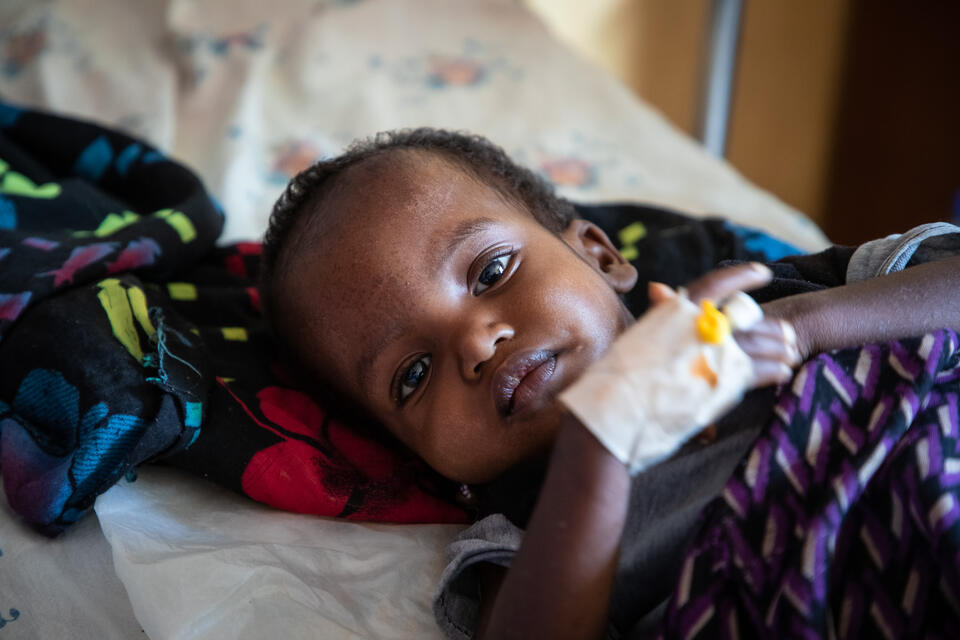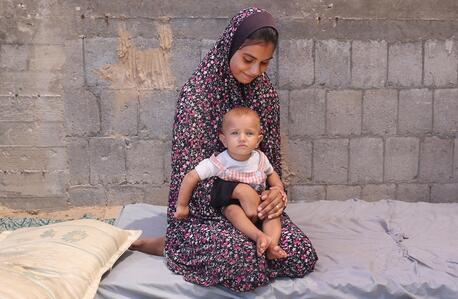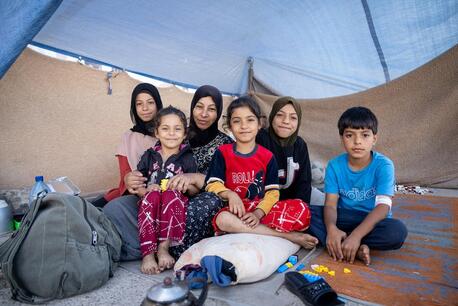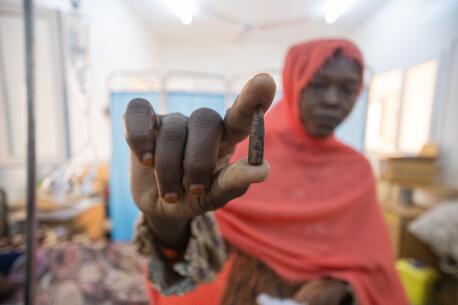Pneumonia
Pneumonia kills more children than any other infectious disease. UNICEF works around the world to strengthen prevention and improve access to treatment. Learn more, including how to help.
Pneumonia in children: Everything you need to know
Pneumonia kills more children than any other infectious disease. An acute respiratory infection of the lungs, it claims the lives of about 725,000 children under age 5 every year. Newborns are particularly vulnerable.
Children in poor countries and in fragile and humanitarian settings — places where there is little or no access to basic health services and support needed to prevent and treat the disease — are at highest risk.
UNICEF is there to help.
What causes pneumonia?
Pneumonia can develop from bacteria, viruses or fungi in the air. When a child has pneumonia, their lungs are filled with fluid and breathing becomes difficult. Children whose immune systems are immature or weakened by undernourishment or diseases such as HIV are more vulnerable to developing pneumonia.
What are symptoms of pneumonia in children?
The most common symptoms of pneumonia are coughing, trouble breathing and fever. Children with pneumonia usually experience fast breathing, with their lower chests drawing in or retracting instead of expanding as they inhale.

Is pneumonia contagious?
Pneumonia is contagious. It can be spread through airborne particles released by a cough or sneeze. It can also be spread through fluids or contact with contaminated surfaces.
Is pneumonia deadly?
Though preventable and treatable, pneumonia kills about 725,000 children every year. The countries with the largest number of child pneumonia deaths are in sub-Saharan Africa and Asia.
How is pneumonia diagnosed in children?
Health workers can diagnose pneumonia through a physical exam that includes checking for abnormal breathing patterns and listening to the child’s lungs. Sometimes chest X-rays or blood tests are used for diagnosis.
Without access to these tools, health workers often diagnose pneumonia by counting the number of breaths the child takes per minute. For instance, a 5-month-old infant who takes 50 breaths per minute would be breathing too fast and could have pneumonia. The number of breaths that qualify as fast breathing depends on the child’s age; younger children normally have higher breathing rates than older children.
How is pneumonia treated?
The treatment for pneumonia depends on the type. In developing countries, a large number of pneumonia cases are caused by bacteria and can be treated with low-cost antibiotics. If a patient has pneumonia that's caused by a virus, they may be treated with an antiviral medication. In severe cases, patients are given intravenous fluids and oxygen therapy.
Every day, at least one child dies every 43 seconds from pneumonia. Almost all of these deaths are preventable.
How important is oxygen in pneumonia treatment?
Oxygen is an essential and lifesaving treatment for children and newborns suffering from severe pneumonia. That's because pneumonia causes inflammation in the lungs, which prevents enough oxygen from entering the bloodstream.
In many countries where UNICEF works — countries without strong health systems — oxygen is only available at higher-level hospitals and health facilities. UNICEF helps bridge the gap.
What can be done to prevent pneumonia?
Pneumonia can be prevented by ensuring adequate nutrition and reducing risk factors such as air pollution, which makes the lungs more vulnerable to infection.
Good hygiene practices can also help. Studies have shown that improved handwashing — with soap — reduces the risk of pneumonia by lowering exposure to bacteria.
Is there a pneumonia vaccine?
Pneumonia caused by bacteria is easily preventable with vaccines. However, 40 percent of children around the world are not immunized.
The Pneumococcal (PCV) vaccine is the primary vaccine for preventing pneumonia. The Diphtheria-Tetanus-Pertussis and Haemophilus Influenzae B (Hib) vaccines also protect children from pneumonia.
What role does air pollution play in pneumonia?
Air pollution can significantly increase the risk of respiratory infection, including pneumonia. Almost half of all pneumonia deaths are attributable to air pollution.
Outdoor air pollution is a risk to children, especially with growing rates of urbanization in countries that already experience high rates of disease. Indoor air pollution generated by unclean fuels for cooking and heating also poses a threat.
Is malnutrition a factor in pneumonia-related deaths?
Wasting, the most visible and life-threatening form of malnutrition, is the leading risk factor for deaths from pneumonia among children. When a child is undernourished and their immune system is weak, they are far more vulnerable to diseases like pneumonia. Wasting tends to occur very early in life and disproportionately impacts children under age 2.
Related: How UNICEF fights child malnutrition
How UNICEF helps stop childhood pneumonia
Together with partners, UNICEF works globally to both prevent and treat pneumonia. It is an important objective of child immunization, nutrition, hygiene and other ongoing program work. Specific efforts in particular countries include:
- Bangladesh: improving availability and access to oxygen in Tangail General Hospital and Chattogram Medical College Hospital, and establishing a liquid medical oxygen plant for the Special Care Newborn Unit in Cox’s Bazar Sadat District Hospital, which services Rohingya refugees
- Kenya: expanding oxygen access, including training health care workers in therapeutic oxygen and pulse oximeter use in children
- Liberia: leveraging resources developed during the COVID-19 response to strengthen and expand oxygen resources at JDJ Memorial Hospital — including equipping the hospital with 13 oxygen concentrators and ensuring sufficient fuel for the hospital’s generators
- Nepal: developing national guidelines for oxygen therapies for children and newborns and implementing guidelines for infection prevention and control in newborn and pediatric units
- Nigeria: supporting the development of clean and reliable electricity systems — crucial for improving access to lifesaving pneumonia treatments like oxygen therapy — for hospitals in Nigeria
- Sierra Leone: supporting the installation of three Pressure Swing Adsorption (PSA) oxygen plants
The COVID-19 pandemic exposed shortages of medical-grade oxygen in low- and middle-income countries. UNICEF addressed this challenge through the Oxygen Plant-in-a-Box initiative. This innovative solution delivers fully functional oxygen systems to communities, either contained within a single shipping box or shipped in parts for local assembly and operation. Since the project’s inception, 50 new plants in 19 countries have become operational.
Learn more about what UNICEF does to create a more equitable world for children. Support UNICEF. Donate today.



